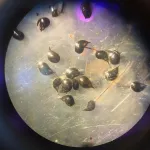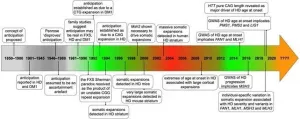New study reveals biodiversity important at regional scales
Findings from long-term, landscape-level analyses can help enhance conservation
2021-02-11
(Press-News.org) New research shows that biodiversity is important not just at the traditional scale of short-term plot experiments--in which ecologists monitor the health of a single meadow, forest grove, or pond after manipulating its species counts--but when measured over decades and across regional landscapes as well. The findings can help guide conservation planning and enhance efforts to make human communities more sustainable.
Published in a recent issue of Frontiers in Ecology and the Environment, the multi-institutional study was led by Dr. Christopher Patrick of William & Mary's Virginia Institute of Marine Science, along with Kevin McCluney of Bowling Green State University, Albert Ruhi of University of California-Berkeley, Andrew Gregory of the University of North Texas, John Sabo of Arizona State University, and James Thorp of the University of Kansas.
"Having low biodiversity is like putting all your eggs in one basket and puts us at greater risk of something catastrophic happening," says Patrick. "We've known this for a long time, but never before have we shown this to be true for entire regions and landscapes." The team reached their findings by compiling, analyzing, and modeling data collected over decades and across both aquatic and terrestrial ecosystems. The analysis focused on abundance and diversity trends within 50 families of terrestrial beetles from the Sonoran Desert, 25 species of submerged aquatic vegetation or SAV within the Chesapeake Bay, and 56 species of fish from small streams in Maryland.
The threats posed by low biodiversity are exemplified by a recent drop in coverage of SAV within the Chesapeake, as recorded by VIMS' long-term monitoring program. "For the past few years, our gains in seagrass coverage were mostly due to the expansion of one species, widgeon grass," says Patrick. "That made us vulnerable. When widgeon grass had a bad year in 2019, we saw the single biggest drop in Chesapeake Bay SAV in the history of the VIMS monitoring program." Program scientists began recording SAV acreage in the bay in 1978.
Patrick says "The lesson here is that promoting biodiversity will increase ecosystem resilience." This is particularly important given increased variability in temperature and precipitation, population sizes, and ecosystem functions--often the result of human influence--which can increase the risk for local extinctions, promote outbreaks of pests or disease vectors, and curtail yields from human fisheries and agriculture.
Patrick notes that he and others at VIMS are already starting to put the findings from the recent study into practice. Researchers from Patrick's lab are collaborating with colleagues at the Chesapeake Bay National Estuarine Research Reserve on a multi-species restoration of SAV in Broad Bay near the Chesapeake Bay mouth in Virginia Beach. "In the past we've only planted one species, eelgrass," he says, "so trying to plant both eelgrass and widgeon grass together is a big change and one that will hopefully enhance the long-term success of the restoration of SAV to Broad Bay."
The team anticipates their findings will benefit conservation efforts within other ecosystems as well. "Understanding the interplay between regional and local controls of ecosystem variability may aid in the design of more effective conservation actions, management practices, and monitoring networks worldwide," says Patrick.
"Our results," he adds, "bolster the argument for conserving biodiversity by showing that it is needed at both local and regional scales to maintain stable delivery of ecosystem services across entire landscapes. We should not only avoid putting all our eggs in one basket, but ensure that we have lots of different kinds of eggs in lots of different kinds of baskets."
INFORMATION:
[Attachments] See images for this press release:

ELSE PRESS RELEASES FROM THIS DATE:
2021-02-11
STEMOs (Stroke-Einsatz-Mobile) have been serving Berlin for ten years. The specialized stroke emergency response vehicles allow physicians to start treating stroke patients before they reach hospital. For the first time, a team of researchers from Charité - Universitätsmedizin Berlin has been able to show that the dispatch of mobile stroke units is linked to improved clinical outcomes. The researchers' findings, which show that patients for whom STEMOs were dispatched were more likely to survive without long-term disability, have been published in JAMA*.
The phrase 'time is brain' emphasizes a fundamental principle from emergency medicine, namely that after stroke, every minute counts. Without ...
2021-02-11
With the help of the international Gemini Observatory, a Program of NSF's NOIRLab, and other ground-based telescopes, astronomers have confirmed that a faint object discovered in 2018 and nicknamed "Farfarout" is indeed the most distant object yet found in our Solar System. The object has just received its designation from the International Astronomical Union.
Farfarout was first spotted in January 2018 by the Subaru Telescope, located on Maunakea in Hawai'i. Its discoverers could tell it was very far away, but they weren't sure exactly how far. They needed more observations.
"At that time we did not know the object's orbit as we only had the Subaru discovery observations over 24 hours, but it takes years of ...
2021-02-11
A report summary released today by a team at Lehigh University led by Thomas McAndrew , a computational scientist and assistant professor in Lehigh's College of Health, shares the consensus results of experts in the modeling of infectious disease when asked to rank the top 5 most effective interventions to mitigate the spread and impact of COVID-19 in the U.S.
The report is part of an ongoing meta forecasting project aimed at translating forecasting and real world experience into actions.
McAndrew and his colleagues wanted to answer "Here is where ...
2021-02-11
Wilmington, DE, Feb. 11, 2020 -Scientists have developed an affordable, downloadable app that scans for potential unintended mistakes when CRISPR is used to repair mutations that cause disease. The app reveals potentially risky DNA alterations that could impede efforts to safely use CRISPR to correct mutations in conditions like sickle cell disease and cystic fibrosis. The development of the new tool, called DECODR (which stands for Deconvolution of Complex DNA Repair), was reported today in The CRISPR Journal by researchers from ChristianaCare's Gene Editing Institute.
"Our research has shown that when CRISPR is used to repair a gene, it also can introduce a variety of subtle changes to DNA near the site of the repair," said Eric ...
2021-02-11
Amsterdam, February 11, 2021 - Recent genetic data from patients with Huntington's disease (HD) show that DNA repair is an important factor that determines how early or late the disease occurs in individuals who carry the expanded CAG repeat in the HTT gene that causes HD. The processes of DNA repair further expand the CAG repeats in HTT in the brain implicated in pathogenesis and disease progression. This special issue of the Journal of Huntington's Disease (JHD) is a compendium of new reviews on topics ranging from the discovery of somatic CAG repeat expansion in HD, to our current understanding of the molecular mechanisms involved ...
2021-02-11
In the last 25 years, scientists have discovered over 4000 planets beyond the borders of our solar system. From relatively small rock and water worlds to blisteringly hot gas giants, the planets display a remarkable variety. This variety is not unexpected. The sophisticated computer models, with which scientists study the formation of planets, also spawn very different planets. What the models have more difficulty to explain is the observed mass distribution of the planets discovered around other stars. The majority have fallen into the intermediate mass category - planets with masses of several Earth masses to around that of Neptune. Even in ...
2021-02-11
LAWRENCE -- Nearly every fall, as football teams return to the field, tragic stories of players falling ill and even dying of heat trauma make the headlines. What many don't consider is that marching band members -- who don heavy uniforms and perform in the same sweltering temperatures -- may also be at risk.
A study led by the University of Kansas has measured core temperatures, hydration and sweat levels of marching band members and found that they are very much at risk and deserve access to athletic trainers for their safety -- just as players do.
The study used high tech methods to gauge band members' body core ...
2021-02-11
A study led by researchers at Baylor College of Medicine reveals a novel role of the steroid receptor coactivator 3 (SRC-3/NCOA3), a protein crucial for steroid hormone function and a prognostic marker for aggressive human breast and other cancers.
The team discovered that SRC-3 also regulates human immune T regulatory cells (Tregs), which contribute to the regulation of the body's immunological activity by suppressing the function of other immune cells, including those involved in fighting cancer. The study, which appears in the journal Scientific Reports, shows that Tregs whose SRC-3 function was eliminated failed to suppress the activity of other immune cells in the lab. The authors anticipate that their findings ...
2021-02-11
The golden-mantled ground squirrel (Callospermophilus lateralis) is a popular sight among tourists in the Rocky Mountains--the small rodent is a photogenic creature with a striped back and pudgy cheeks that store seeds and other food.
But there's a reality that Instagram photos don't capture, said Christy McCain, an ecologist at the University of Colorado Boulder. In a new study spanning nearly 13 years, she and her colleagues discovered that the ground squirrel has joined many other small mammals in Colorado's Rocky Mountains that are making an ominous trek: They're climbing uphill to avoid warming temperatures in the state brought on by climate change.
"It's frightening," ...
2021-02-11
Globular clusters are extremely dense stellar systems, in which stars are packed closely together. They are also typically very old -- the globular cluster that is the focus of this study, NGC 6397, is almost as old as the Universe itself. It resides 7800 light-years away, making it one of the closest globular clusters to Earth. Because of its very dense nucleus, it is known as a core-collapsed cluster.
When Eduardo Vitral and Gary A. Mamon of the Institut d'Astrophysique de Paris set out to study the core of NGC 6397, they expected to find evidence for an "intermediate-mass" black hole (IMBH). These are smaller than the supermassive black holes that lie at the cores of large galaxies, but larger than stellar-mass black holes ...
LAST 30 PRESS RELEASES:
[Press-News.org] New study reveals biodiversity important at regional scales
Findings from long-term, landscape-level analyses can help enhance conservation






